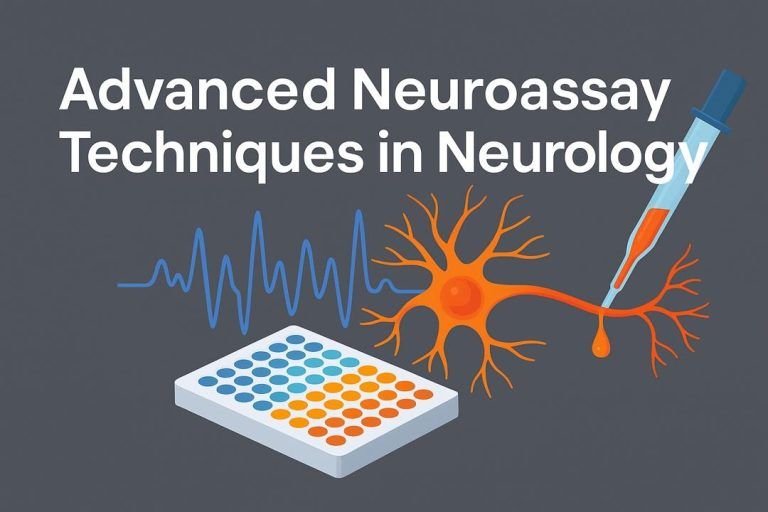Advanced neuroassay techniques play a vital role in modern neurology. These innovative tools allow for accurate measurement of biomarkers in cerebrospinal fluid (CSF), blood, and brain tissue, revolutionizing the way we diagnose and treat neurological disorders.
Role of Neuroassays in Modern Clinical Neurology
Advanced neuroassays aid in the early detection, differential diagnosis, and monitoring of a wide spectrum of neurological diseases. This includes neurodegenerative conditions, autoimmune encephalopathies, neuroinflammatory syndromes, and CNS infections.
Key Clinical Applications
- CSF Biomarker Profiling in Alzheimer’s, Parkinson’s, and Multiple Sclerosis
- Autoantibody Panels (e.g., anti-NMDA receptor, LGI1, CASPR2) in autoimmune encephalitis
- Pharmacodynamic Monitoring of CNS-active therapies, including monoclonal antibodies and antisense oligonucleotides
Types of Advanced Neuroassay Techniques
1. Multiplex Immunoassays
These assays allow simultaneous quantification of multiple cytokines, chemokines, and neurodegenerative biomarkers from minimal sample volume—ideal for CSF and plasma profiling in research and diagnostics.
2. Mass Spectrometry-Based Assays
High-resolution LC-MS/MS assays provide accurate quantification of small molecule metabolites and protein isoforms in neurodegenerative diseases.
3. RT-qPCR and Digital PCR
Used to assess gene expression changes, including miRNA profiling in neuroinflammation and gliomas.
Future Trends in Advanced Neuroassay Technologies
Neuroassays play a crucial role in translational neuroscience, enabling rapid validation of experimental therapies and biomarker-driven stratification of patients in clinical trials.
Emerging trends include:
- Neurofluidic-on-a-chip systems
- Artificial intelligence-assisted assay interpretation
- Integration with multi-omics (genomics, proteomics, metabolomics)
Ethical and Practical Considerations
- Sample accessibility: CSF vs. blood-based biomarkers
- Standardization: Inter-lab assay variability remains a major limitation
- Cost-effectiveness: High-complexity assays may not be feasible in routine practice without centralized labs
Conclusion
For neurologists engaged in clinical care or research, familiarity with advanced neuroassay platforms is no longer optional. They enable precision diagnostics, treatment tailoring, and early intervention—core principles of modern neurology. https://neurobiobank.nih.gov

